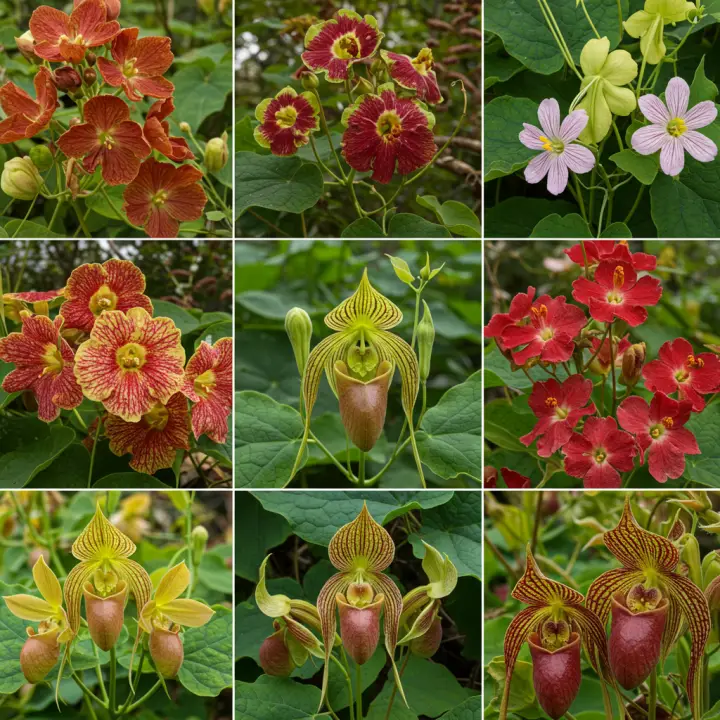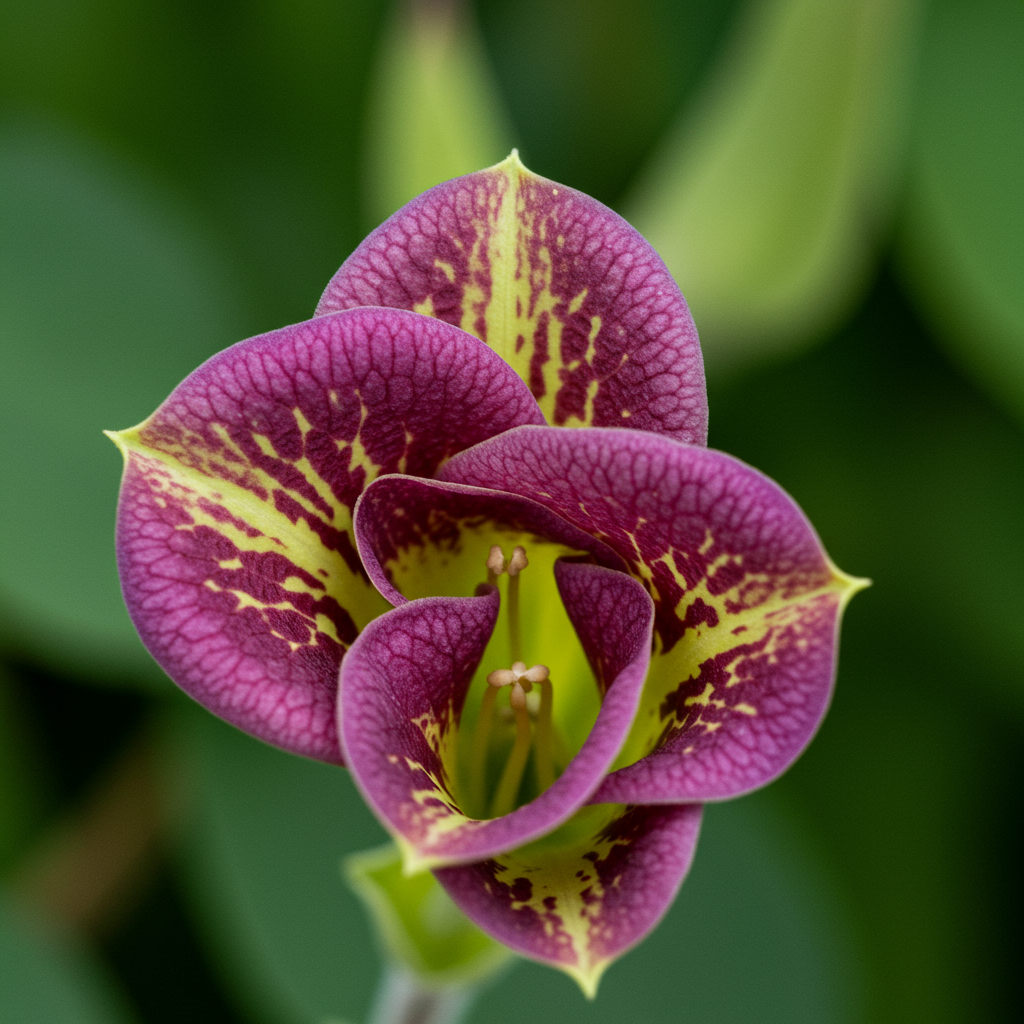For a truly unique and captivating addition to your Florida garden, explore the diverse and stunning varieties of Aristolochia Florida. These exotic vines, commonly known as Dutchman’s Pipe Vines, are celebrated for their extraordinary, pipe-shaped flowers and their crucial role as host plants for the magnificent Pipevine Swallowtail butterfly.
Unveiling the Enigma of Aristolochia

Aristolochia, often affectionately called Dutchman’s Pipe Vine, is a genus of flowering plants renowned for its peculiar and often dramatic blossoms. Originating from tropical and subtropical regions around the globe, these vines bring an unparalleled sense of mystique and natural artistry to any landscape.
In Florida’s warm, humid climate, several species of Aristolochia flourish, transforming gardens into vibrant, butterfly-friendly havens. Beyond their striking appearance, many Aristolochia varieties are indispensable host plants for the Pipevine Swallowtail butterfly, making them a top choice for eco-conscious gardeners focused on supporting local wildlife.
What Makes Aristolochia So Unique?
The allure of Aristolochia lies primarily in its flowers. Their remarkable structure, resembling an old-fashioned smoking pipe, is a fascinating example of evolutionary adaptation. These intricate blooms are designed to attract specific pollinators, often small flies, luring them into a temporary trap to ensure pollen transfer.
Beyond their unusual beauty, their ecological importance cannot be overstated. For gardeners in Florida and similar climates, planting Aristolochia is a powerful way to contribute to local butterfly populations, offering a vital food source for caterpillars that will eventually transform into the stunning Pipevine Swallowtail butterfly.
Top Stunning Aristolochia Varieties Thriving in Florida
While many Aristolochia species exist, a select few truly shine in Florida’s unique environment, offering breathtaking displays and valuable ecological benefits. Here are some of the best varieties that will undoubtedly make a statement in your garden.
Aristolochia gigantea (Brazilian Dutchman’s Pipe)
Distinctive Feature: Living up to its name, Aristolochia gigantea boasts some of the largest and most dramatic flowers in the genus. Individual blooms can reach an astonishing 12-18 inches long, featuring an elaborate pouch and flared “lip.”
Appearance: Its extravagant flowers are typically a striking mix of deep reddish-purple venation and creamy-white, often with a fuzzy texture that adds to their exotic appeal.
Growth Habit: This is a vigorous, fast-growing vine that thrives in full sun to partial shade. It requires sturdy support like a large trellis, pergola, or arbor to showcase its majestic blooms.
Butterfly Appeal: A fantastic host plant for the Pipevine Swallowtail butterfly, making it a must-have for butterfly gardens.
Aristolochia grandiflora (Pelican Flower)
Distinctive Feature: Another giant among the Aristolochias, the Pelican Flower earns its common name from the prominent “tail” extending from its massive, pouch-like flower, resembling a pelican’s beak.
Appearance: Like A. gigantea, its flowers are incredibly large, often spanning over a foot, with intricate patterns of maroon, purple, and cream. Be aware: some find its unique fragrance (designed to attract specific pollinators) less appealing up close.
Growth Habit: A robust tropical vine that loves heat and humidity. It needs ample space and strong support to climb, making it perfect for covering large structures.
Butterfly Appeal: An excellent host for Pipevine Swallowtail caterpillars.
Aristolochia elegans (Calico Flower / Elegant Pipevine)
Distinctive Feature: While not as large as A. gigantea or A. grandiflora, Aristolochia elegans offers an abundance of charming, heart-shaped leaves and numerous smaller, intricately patterned flowers.
Appearance: The blooms are exquisite, typically 3-4 inches long, with a distinct purplish-brown “pipe” and a creamy-white calyx heavily patterned with deep purple-brown veins, resembling calico fabric.
Growth Habit: A more manageable vine for smaller spaces, it still climbs vigorously and provides a dense screen of attractive foliage and continuous blooms throughout the warm months.
Butterfly Appeal: Highly favored by Pipevine Swallowtail butterflies, making it a reliable choice for butterfly enthusiasts.
Aristolochia tomentosa (Woolly Dutchman’s Pipe)
Distinctive Feature: A North American native (though its range extends into warmer zones), this species is distinguished by its velvety, fuzzy stems and leaves, giving it a soft, textural appeal.
Appearance: The flowers are more subtle than their tropical cousins, typically yellowish-green with purplish-brown throats, and possess a unique, slightly U-shaped opening.
Growth Habit: A hardy and vigorous vine that’s more cold-tolerant than other varieties, making it suitable for cooler parts of Florida and potentially year-round interest. It can grow quite large.
Butterfly Appeal: Also serves as a valuable host plant for the Pipevine Swallowtail and other native pipevine swallowtail species.
Cultivating Aristolochia in Your Florida Garden
Growing these stunning Aristolochia vines in Florida is relatively straightforward, provided you meet a few basic requirements.
Choosing the Right Spot
Most Aristolochia varieties prefer full sun to partial shade. In Florida’s intense summer heat, some afternoon shade can be beneficial, especially for varieties with very large leaves or flowers. Ensure the chosen site has well-draining soil, as they dislike soggy roots.
Planting and Support
Being vigorous climbers, Aristolochia vines require sturdy support from day one. Plant them near trellises, arbors, pergolas, fences, or even robust tree trunks. Dig a hole twice as wide as the root ball and just as deep, incorporating some compost for added nutrients.
Watering and Fertilizing
Keep the soil consistently moist, especially during hot, dry periods and when the plant is establishing. Once mature, some varieties can tolerate brief dry spells. Fertilize sparingly with a balanced, slow-release granular fertilizer in spring, or use a liquid feed every few weeks during the growing season. Too much nitrogen can promote foliage over flowers.
Pruning for Vigor
Prune to manage size, shape, and encourage bushier growth. The best time to prune is typically in late winter or early spring before new growth begins, or lightly throughout the growing season to remove spent flowers or unruly stems.
Pest and Disease Management
Aristolochia are generally robust plants. Keep an eye out for common garden pests like aphids or spider mites, especially on new growth. Healthy plants are more resistant to issues. The Pipevine Swallowtail caterpillars, of course, are welcome guests and should not be removed!
The Butterfly Connection
Remember, one of the greatest joys of growing Aristolochia is witnessing the life cycle of the Pipevine Swallowtail butterfly. Its caterpillars, distinctively dark with orange spikes, will feed on the leaves, so be prepared for some munching. This is a sign of a healthy, biodiverse garden!
Important Considerations: A Note on Toxicity
While Aristolochia plants are beautiful and ecologically significant, it’s crucial to be aware that they contain aristolochic acid. This compound is toxic if ingested and has been linked to kidney damage and cancer. For this reason, Aristolochia plants should not be consumed by humans or pets, and proper handling (e.g., wearing gloves when pruning if you have sensitive skin) is advised. Plant them in areas where toddlers or curious pets won’t be tempted to chew on them.
Frequently Asked Questions about Aristolochia Florida
Q1: Is Aristolochia native to Florida?
While some species like Aristolochia serpentaria (Virginia Snakeroot) are native to Florida, many of the stunning, large-flowered varieties like A. gigantea and A. grandiflora are introduced but thrive beautifully in Florida’s climate.
Q2: What butterflies does Aristolochia attract?
The most notable butterfly attracted to Aristolochia as a host plant is the Pipevine Swallowtail (Battus philenor). Its caterpillars exclusively feed on Aristolochia species.
Q3: Is Aristolochia difficult to grow?
No, most Aristolochia varieties are relatively easy to grow in Florida with the right conditions: adequate sunlight (full sun to partial shade), well-draining soil, consistent moisture, and sturdy support for climbing.
Q4: When does Aristolochia bloom in Florida?
Most of the popular, stunning varieties will bloom repeatedly throughout the warmer months in Florida, typically from spring through fall, with peak flowering during late spring and summer.
Q5: What are the best growing conditions for Aristolochia in Florida?
They prefer consistently moist, well-draining soil, full sun to partial shade (with some afternoon shade beneficial in intense Florida heat), and a sturdy structure for climbing. They also appreciate regular fertilization during the growing season.
Conclusion: Embrace the Unique Beauty of Aristolochia Florida
Adding Aristolochia Florida to your garden is an invitation to embrace the extraordinary. With their spectacularly unique blooms and vital role as host plants for the Pipevine Swallowtail butterfly, these vines offer more than just beauty—they create a dynamic, living ecosystem right in your backyard. Choose from giant, dramatic flowers or intricate, patterned ones, and prepare to be enchanted by the natural artistry and ecological benefits these stunning varieties bring to the Sunshine State.

